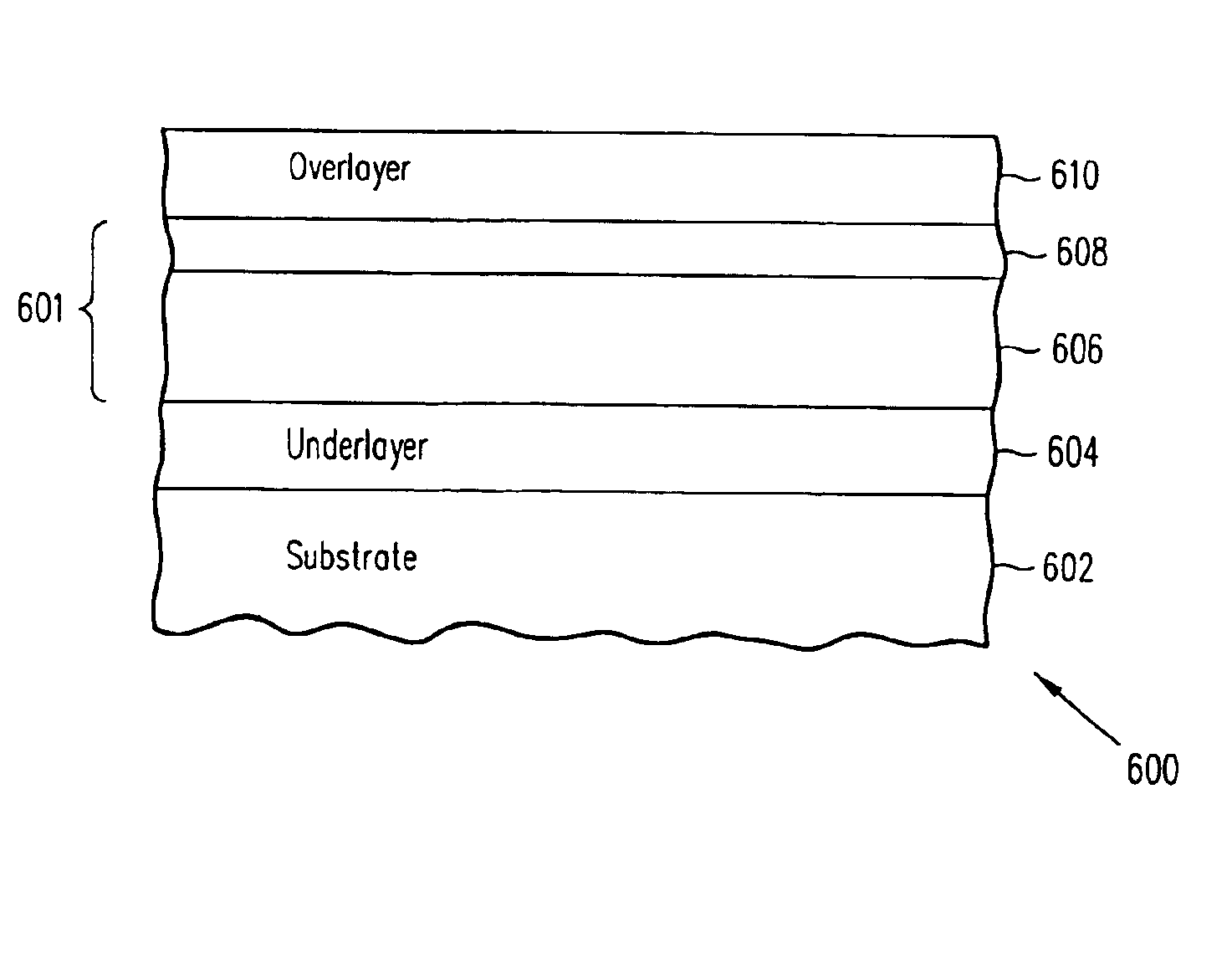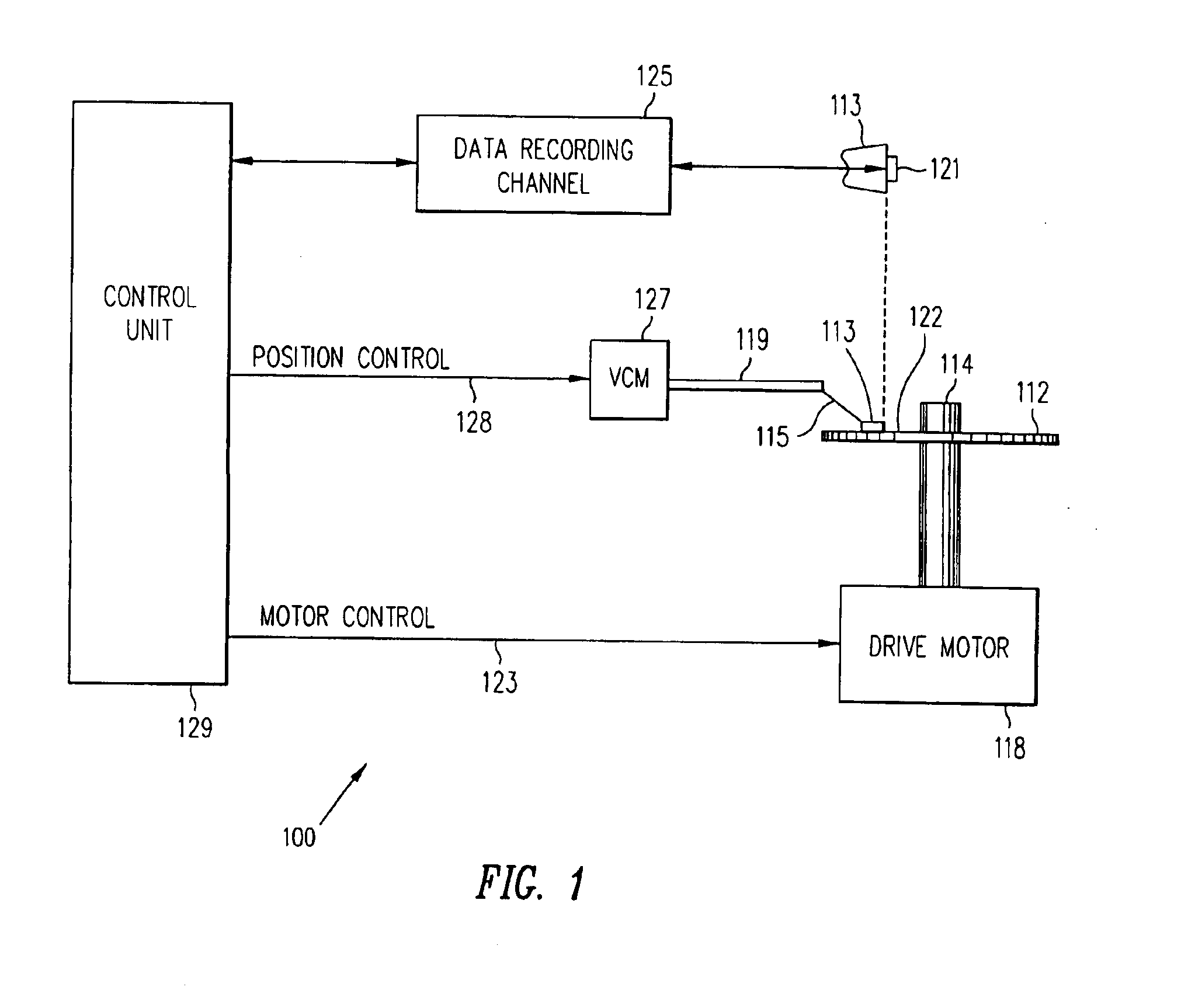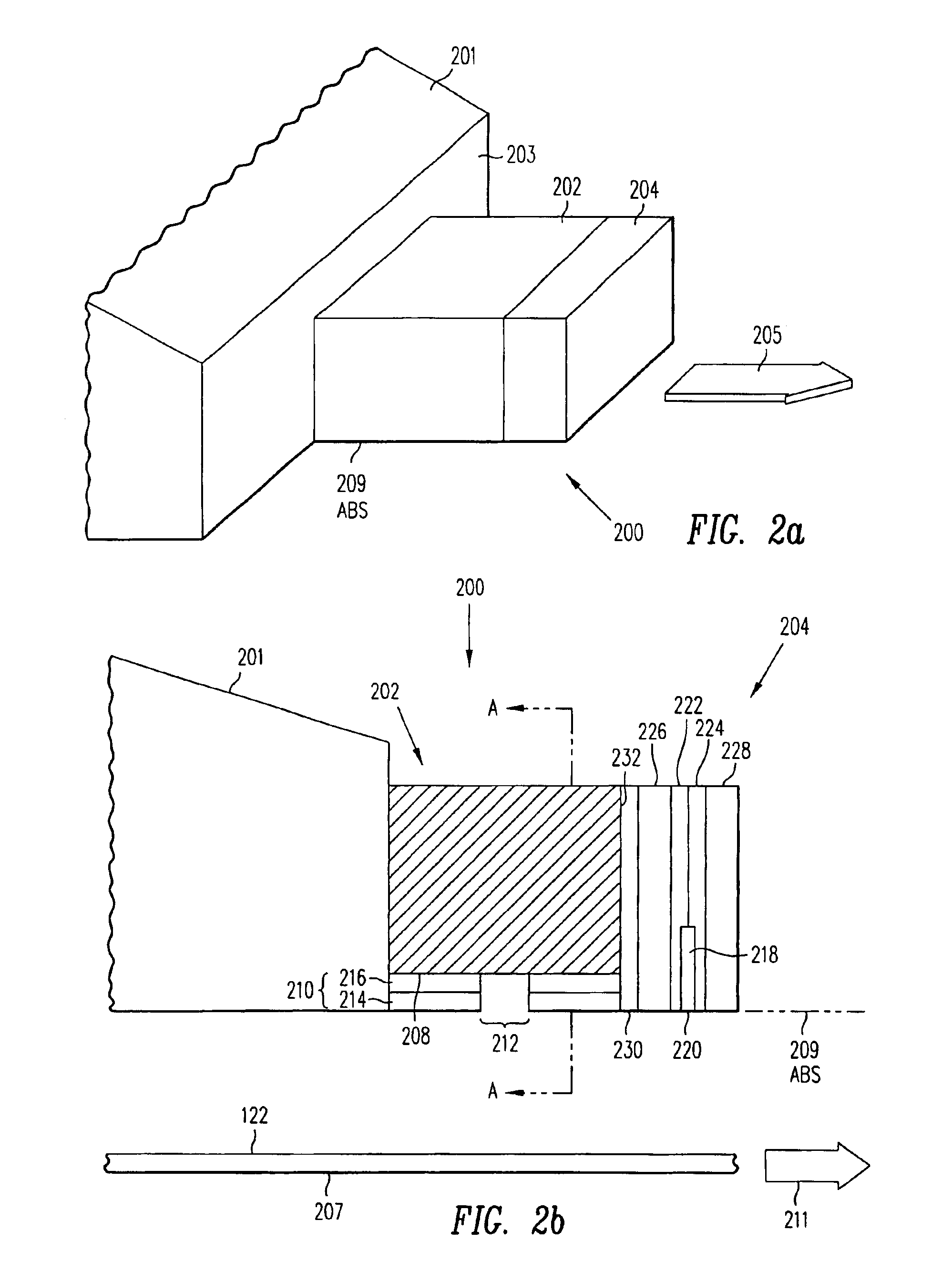‘Thermal spring’ magnetic recording media for writing using magnetic and thermal gradients
- Summary
- Abstract
- Description
- Claims
- Application Information
AI Technical Summary
Benefits of technology
Problems solved by technology
Method used
Image
Examples
second embodiment
[0066]FIG. 6a shows the layer structure of a thermal spring magnetic recording media 600 for use with the read / write head of the present invention. The thermal spring media 600 comprises a bilayer 601 formed of a thick first magnetic layer 606 of high magneto-crystalline anisotropy KU1, low Curie temperature TC1 material and an adjacent thin second magnetic layer 608 of low KU2, high saturation magnetization MS2, high Curie temperature TC2 material in laminar contact with the first layer. The first magnetic layer 606 is made of the L10 phase of Fe—Pt—Ni where a small amount of Ni is added to reduce TC to the desired level. Table 1 is data showing the effect of Ni concentration on the magneto-crystalline anisotropy KU and the Curie temperature TC of L10 materials. The first magnetic layer 606 of Fe—Pt—Ni has a thickness of approximately 60 Å. Alternatively, the first magnetic layer 606 may be formed of other granular, high anisotropy alloys such as the L1o phases of Fe—Pt, Co—Pt and ...
third embodiment
[0070]FIG. 6b shows the layer structure of a thermal spring magnetic recording media 620 for use with the read / write head of the present invention. The thermal spring media 620 comprises a thick first magnetic layer 622 of a granular L10 phase of Fe—Pt—Ni having a thickness of approximately 60 Å and an adjacent thin stack 624, in laminar contact with the first magnetic layer, made of a plurality of repetitions, preferably 1-4 repetitions, of second magnetic layers 626 of Co having a thickness in the range of 10-50 Å interleaved with nonmagnetic layers 628 of Pd, or alternatively Pt, having a thickness in the range of 1-25 Å. Alternatively, the first magnetic layer 622 may be formed of other granular, high anisotropy alloys such as the L10 phases of Fe—Pt, Co—Pt and Co—Pd. The second magnetic layers 626 may be made of ferromagnetic cobalt-based alloys such as Co—Pt—Cr—B, Co—Pt—Cr, Co—Cr, Cr—Pt—Cr—Nb, Co—Pd—Cr—Nb, Co—Pd—Cr—B and Co—Pd—Cr. The first magnetic layer 622 and the stack 624...
PUM
| Property | Measurement | Unit |
|---|---|---|
| Temperature | aaaaa | aaaaa |
| Angle | aaaaa | aaaaa |
| Temperature | aaaaa | aaaaa |
Abstract
Description
Claims
Application Information
 Login to View More
Login to View More - R&D
- Intellectual Property
- Life Sciences
- Materials
- Tech Scout
- Unparalleled Data Quality
- Higher Quality Content
- 60% Fewer Hallucinations
Browse by: Latest US Patents, China's latest patents, Technical Efficacy Thesaurus, Application Domain, Technology Topic, Popular Technical Reports.
© 2025 PatSnap. All rights reserved.Legal|Privacy policy|Modern Slavery Act Transparency Statement|Sitemap|About US| Contact US: help@patsnap.com



